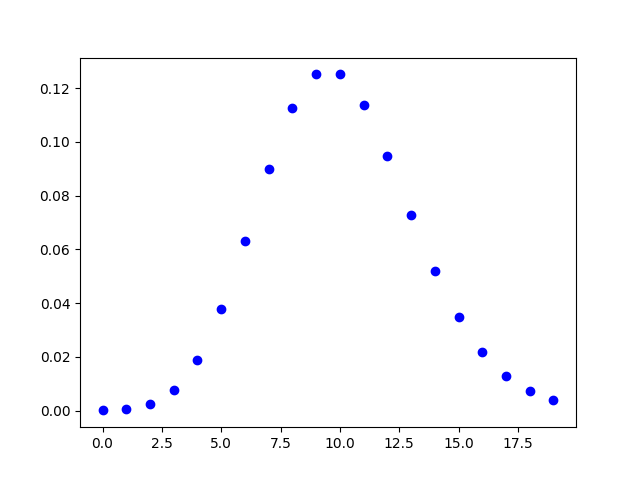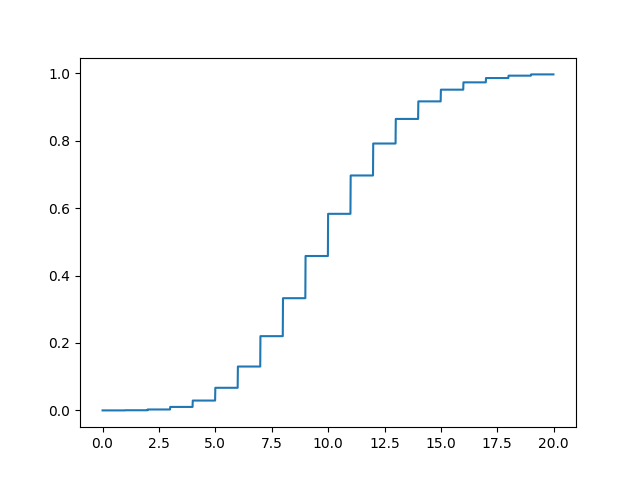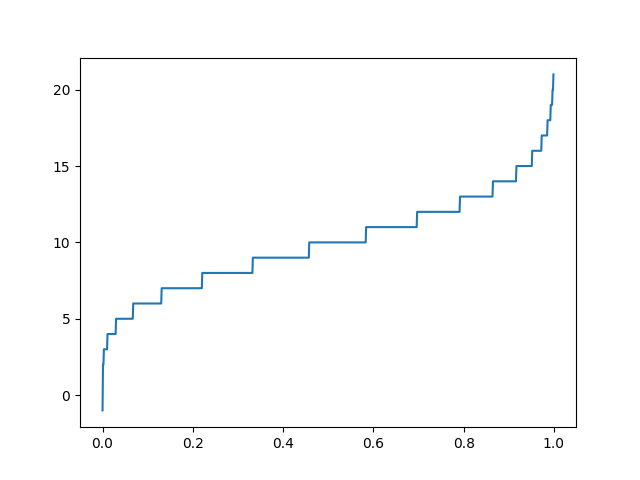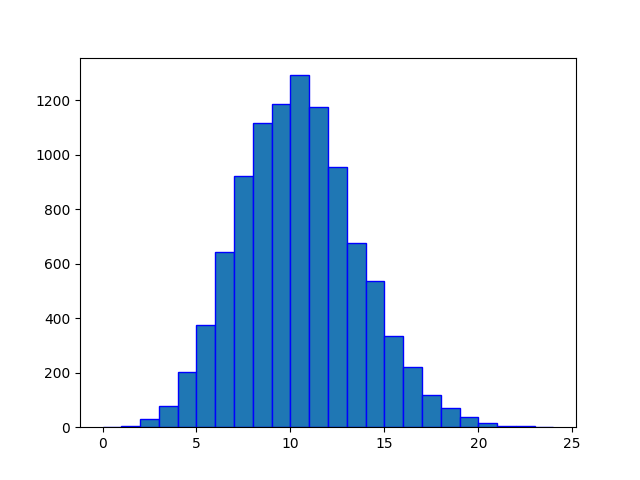SciPy - Poisson Distribution
Poisson Distribution is a discrete probability distribution and it expresses the probability of a given number of events occurring in a fixed interval of time or space if these events occur with a known constant mean rate and independently of the time since the last event.
The probability mass function (pmf) of poisson distribution is defined as:

Where, k is the number of occurrences (k=0,1,2...), μ is average number of events.
An poisson distribution has mean μ and variance μ.
The cumulative distribution function (cdf) evaluated at k, is the probability that the random variable (X) will take a value less than or equal to k. The cdf of poisson distribution is defined as:

Where, [k] is the greatest integer less than or equal to k.
The scipy.stats.poisson contains all the methods required to generate and work with a poisson distribution. The most frequently methods are mentioned below:
Syntax
scipy.stats.poisson.pmf(k, mu, loc=1) scipy.stats.poisson.cdf(k, mu, loc=1) scipy.stats.poisson.ppf(q, mu, loc=1) scipy.stats.poisson.rvs(mu, loc=0, size=1)
Parameters
k |
Required. Specify float or array_like of floats representing random variable. |
q |
Required. Specify float or array_like of floats representing probabilities. |
mu |
Required. Specify float or array_like of floats of (non-negative) means. |
loc |
Optional. Specify the location of the distribution. Default is 1. |
size |
Optional. Specify output shape. |
poisson.pmf()
The poisson.pmf() function measures probability mass function (pmf) of the distribution.
from scipy.stats import poisson import matplotlib.pyplot as plt import numpy as np #creating an array of values between #0 to 20 with a difference of 1 x = np.arange(0, 20, 1) y = poisson.pmf(x, 10, 0) plt.plot(x, y, 'bo') plt.show()
The output of the above code will be:

poisson.cdf()
The poisson.cdf() function returns cumulative distribution function (cdf) of the distribution.
from scipy.stats import poisson import matplotlib.pyplot as plt import numpy as np #creating an array of values between #0 to 20 with a difference of 0.01 x = np.arange(0, 20, 0.01) y = poisson.cdf(x, 10, 0) plt.plot(x, y) plt.show()
The output of the above code will be:

poisson.ppf()
The poisson.ppf() function takes the probability value and returns cumulative value corresponding to probability value of the distribution.
from scipy.stats import poisson import matplotlib.pyplot as plt import numpy as np #creating an array of probability from #0 to 1 with a difference of 0.001 x = np.arange(0, 1, 0.001) y = poisson.ppf(x, 10, 0) plt.plot(x, y) plt.show()
The output of the above code will be:

poisson.rvs()
The poisson.ppf() function generates an array containing specified number of random values drawn from the given poisson distribution. In the example below, a histogram is plotted to visualize the result.
from scipy.stats import poisson import matplotlib.pyplot as plt import numpy as np #fixing the seed for reproducibility #of the result np.random.seed(10) #creating a vector containing 10000 #random values from poisson distribution y = poisson.rvs(10, 0, 10000) #creating bin bin = np.arange(0,25,1) plt.hist(y, bins=bin, edgecolor='blue') plt.show()
The output of the above code will be:



